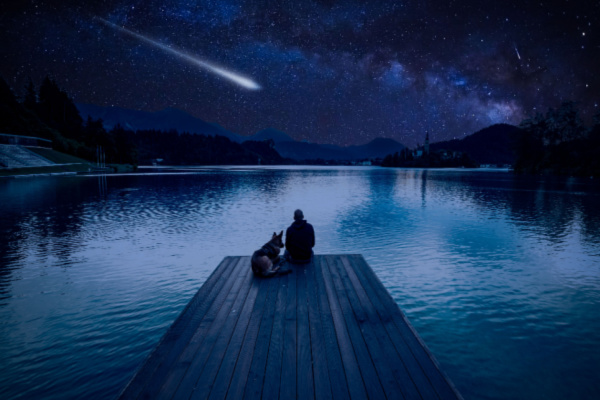The final meteor shower of 2022 will take place on the longest night of the year, an event that is often overlooked following the hyperactive Gemenids.
The Ursid meteor shower is usually the least observed of the major annual showers. In the northern hemisphere December nights are cold and often cloudy. Another hindrance is the fact that it peaks just before the Christmas holiday when many people are busy with holiday festivities. This shower is completely invisible from the southern hemisphere as the radiant lies too far north to be seen from south of the equator this time of year.
The Ursid meteor shower is actually quite active from December 13 through the 24th, but will reach its climax on Wednesday night, December 21, into the early hours of Thursday morning, December 22. This event typically features around 10 meteors per hour, although it occasionally has outbursts of up to 25 meteors per hour, according to the American Meteor Society (AMS).
Meteors will appear to radiate just west of the fairly bright (2nd magnitude) orange constellation Ursa Minor. To those not familiar with star names, this area lies adjacent to the bowl of the “Little Dipper”. A novelty this year: the earth passes close to several past trails of debris that closely follow the orbit of comet 8P/Tuttle. This could enhance the Ursid activity seen this year.
To best view this activity the AMS recommends that you face toward the northern half of the sky. It doesn’t have to be directly at the radiant, but it’s a good idea to have the radiant within your field of view to help with shower association. Don’t look straight up as this is the worst place to look for meteors. Lower you view so that none of the horizon blocks your view. About half way up in the sky is suggested for most observers.
Despite the bitter cold, try to view for at least an hour. Meteor activity is notoriously variable and if you view for only a short time, it may occur during a lull in activity. Viewing for at least an hour ensures you will see several peaks and valleys of activity.
After the Ursids peak, stargazers will have only one more opportunity to witness a meteor shower before a meteor shower drought of nearly four months takes place. Right after the New Year, the Quadrantids peak on the night of January 3 into January 4, and this will be the final meteor shower until the Lyrids take center stage on the night of April 22, 2023.
—
Photo Credit: marcin jucha / Shutterstock.com
